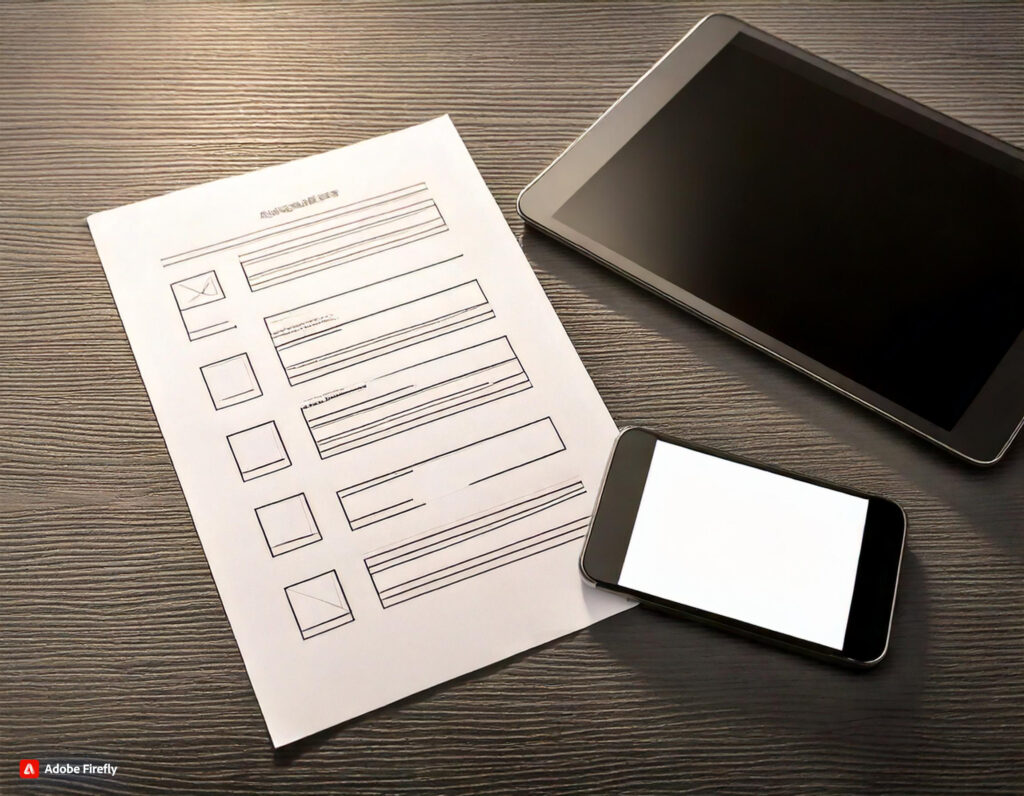Fundamental Principles of UI Design

When diving into UI design, understanding the fundamental principles is crucial to crafting interfaces that users will love. At the heart of effective UI design is simplicity. Your interface should be easy to navigate, ensuring that users can complete their tasks without unnecessary hassle. Keep it straightforward—users should never feel lost or confused.
Consistency is another key principle. This means using similar design elements throughout your application or website to provide a cohesive experience. Think of consistent color schemes, typography, and icons that guide users intuitively through your interface.
Feedback is equally important. Users need immediate responses to their actions, whether they’re clicking a button or submitting a form. Visual or auditory feedback reassures them that their actions are recognized and processed, enhancing their confidence in using your interface.
Accessibility is a principle that’s becoming more and more critical. Making your designs accessible ensures that everyone, including users with disabilities, can interact with your interface effectively. This might involve adding alt text for images, ensuring high color contrast, and making sure keyboard navigation works seamlessly.
User-centered design puts the user’s needs at the forefront. By conducting thorough research and testing, you can gain insights into your target audience’s preferences and pain points. This allows you to create an interface that feels intuitive and user-friendly, tailored specifically to your users.
Keeping these fundamental principles in mind can set the foundation for an exceptional UI design that not only looks good but works effortlessly for everyone.
Top Guidelines for UI Design

Let’s dive into some top guidelines that can elevate your UI design game to the next level. First off, focus on creating clean and clutter-free designs. By removing any unnecessary elements, you make it easier for users to concentrate on what’s truly important. A well-organized layout helps in reducing cognitive load and makes the user experience more enjoyable.
Hierarchy is another essential guideline. You can use size, color, and layout to draw attention to the most important parts of your interface. For instance, a larger, bold headline will naturally catch the eye first, followed by smaller text or less prominent elements. This way, you guide users smoothly through your content.
Responsive design is a must in today’s world where users access websites and apps from various devices. Your UI should adapt seamlessly to different screen sizes and orientations. This ensures a consistent and pleasant user experience, whether someone is using a smartphone, tablet, or desktop.
Intuitive navigation is crucial. Menus and navigation bars should be straightforward and easy to use. A user shouldn’t have to think too hard to find what they’re looking for. Use familiar icons and labels that make sense to your audience. The easier it is to navigate, the happier your users will be.
Regular testing and iteration are invaluable. By continually testing your designs with real users, you can gather feedback and make necessary improvements. This ongoing process helps in fine-tuning your interface to better meet user needs and preferences.
Another guideline is to incorporate ample whitespace in your designs. Don’t be afraid of empty space—it helps to create a balanced layout and makes the content more readable. Whitespace can give your design a clean, modern feel and prevent it from looking cluttered.
Keep accessibility in mind as you design. Making your interface accessible means considering users with various disabilities. Ensure high color contrast for readability, add alt text for images, and make sure your site can be navigated via keyboard. Accessible design is not just good practice; it opens up your interface to a wider audience.
Microinteractions can add a delightful touch to your UI. These small animations or design elements, like a button changing color when hovered over, provide immediate feedback and make the interaction feel more engaging. They can guide users subtly and make the experience more intuitive.
Consistency remains key. Stick to a uniform style for your buttons, fonts, and other design elements across your platform. Consistency helps in building familiarity and trust, making your UI feel cohesive and polished.
Finally, remember that your design should solve problems, not create them. Always think about the user’s journey and how your design can facilitate their goals. Prioritize usability and ensure that every element serves a purpose. This user-focused approach will make your UI not only functional but also delightful to use.
UI Design Trends

UI design trends are always shifting, shaped by new technologies and evolving user preferences. Staying up-to-date with these trends can keep your designs fresh and engaging.
Dark mode has become a staple in modern UI design. Not only does it look sleek, but it also reduces eye strain and conserves battery life, making it a hit among users. Implementing dark mode options in your designs can cater to a wider audience who prefers this visually soothing alternative.
Microinteractions continue to captivate both designers and users. These small, almost imperceptible animations or design elements provide immediate feedback and enhance user interaction. Think of a button that slightly changes color when you hover over it or a fun animation that plays when you complete a task. These tiny details can make a big difference in the overall user experience.
Voice User Interfaces (VUIs) are becoming increasingly relevant with the rise of smart speakers and voice-activated assistants. Designing for voice involves creating interfaces that can accurately understand and respond to spoken commands. It’s a whole new way for users to interact with technology, offering hands-free convenience and accessibility.
Minimalistic design remains a favorite. By focusing on simplicity and removing unnecessary elements, you can make your UI more intuitive and user-friendly. This approach not only improves functionality but also gives your design a clean, modern look that many users appreciate.
Immersive experiences through augmented reality (AR) and virtual reality (VR) are gaining traction. These technologies offer users unique interactions that traditional interfaces can’t match. Whether it’s trying on virtual clothes or exploring a virtual world, AR and VR provide engaging and innovative ways to interact with your interface.
Another trend to watch is the rise of neomorphism, which blends flat design and skeuomorphism to create a soft, almost tactile feel. This approach uses subtle shadows and highlights to give UI elements a more realistic, three-dimensional appearance, making them more engaging and interactive.
Sustainability in design is also gaining importance. As awareness of environmental issues grows, users are looking for brands that reflect their values. Incorporating eco-friendly design practices, such as using energy-efficient color schemes and optimizing load times, can resonate with environmentally conscious users.
Personalization is a trend that’s here to stay. By leveraging data, you can create more tailored experiences for your users. Whether it’s personalized content recommendations or customizable interface options, giving users control over their experience can significantly enhance engagement.
Lastly, there’s a growing emphasis on inclusivity and diversity in design. Creating interfaces that reflect and respect different cultures, languages, and abilities is not just a trend but a necessity. Inclusive design ensures that your UI is accessible and welcoming to all users, regardless of their background or abilities.
Keeping up with these UI design trends can help you stay ahead of the curve and create interfaces that are not only functional but also enjoyable and innovative.
Editor’s note: This content was generated by AI as part of a study of automation and generated content creation. We are working to provide the best content on the future of UI design and the best trends on the industry. All carefully curated by real designer specialists, using the power of AI and automation to provide efficient updates and stay competitive in the web market.
Add us to your favorites and stay tuned 😉